In the beginning, there was Maruti, and there was the 800. It grew into a fortress that was deemed impossible to breach. Then came the Alto and the Alto 800, which made life even more difficult for the competition. Of course, rivals tried. Tata attempted the low sticker price approach with the Nano, Hyundai went for visual appeal with the fluidic Eon, and there were others too. Even Nissan had a ‘Go’ with Datsun; but real success eluded all of them.
Then came the Kwid, a car that broke the mould with its SUV design cues, which made it more a crossover than a conventional hatchback. In addition, it came with features never seen before in a budget car. The Kwid was a game changer, which rightfully earned it our 2016 Car of the Year accolade. With sales consistently close to 10,000 units a month, the Kwid has come closest to threatening Fortress Maruti.
Now, Datsun which also has access to the Kwid’s CMF-A platform developed by the Renault-Nissan Alliance, doesn’t want to lose out. But unlike what Renault has done with the Kwid, the Japanese brand has its own take on what a budget car should be. Not having the first-mover advantage does put Datsun at a bit of a, well, disadvantage, but coming late to the party also brings the benefit of hindsight. It’s an opportunity for Datsun to learn from the Kwid, not to mention its own mistakes with the Go and Go+.
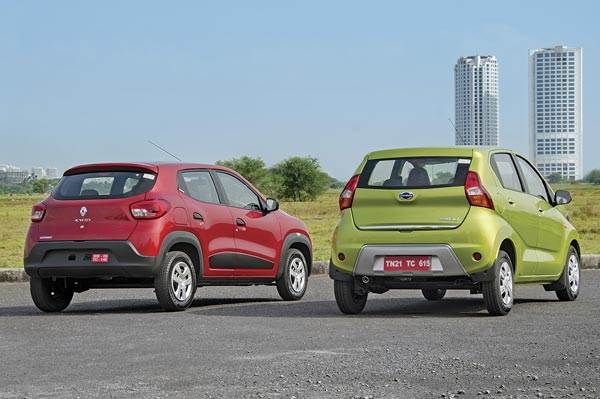
The result is a completely different approach with the Redigo, which is positioned as a trendy and sophisticated urban runabout. Datsun has consciously made the Redigo as compact as possible to play to its city car credentials but more importantly, it wants to minimise the overlap (and hence cannibalisation) with the bigger Go. The Kwid, in contrast, is not as chic as its Japanese cousin, but has a more rugged personality, thanks to its crossover design. The Renault also looks half a size bigger and comes across as the more practical of the two. Both cars have a lot in common and yet, are like chalk and cheese. Question is, which is the better one? Time for some sibling rivalry.
Seperated at birth
The Redigo and Kwid look so different, it’s hard to guess that they are closely related. It’s the basic dimensions that immediately set them apart. The Kwid has more stretched out proportions with its longer wheelbase and overall length, whilst the Redigo is 250mm shorter with smaller overhangs. Park them side by side and it’s the 1,541mm tall Redigo that stands a good 63mm above the squatter Kwid. However, it’s the Redigo which is clearly the smaller of the two and hence lighter as well, weighing around 25kg less than the 670kg Kwid.
In terms of design too, both cars are radically different, with each one faithful to its respective brand. You can’t mistake the Redigo for anything but a Datsun, while the Kwid is clearly a Renault. But which one looks better?
It’s a tough call actually, but the Redigo, with its tightly skinned and well-sculpted body that is so close to the original 2014 concept, is more attractive. The interplay of surfaces between the bonnet, bumper and the chin, as well as all the sharp cuts and curves, are brilliant design details. This signature Datsun grille, with its chrome surround, looks quite upmarket. The small scuff plate, intended to give the Redigo some crossover credentials, looks good too. The headlights are nicely detailed, with metallic inserts in them, and the top-of-the-line model even gets LEDs! Eat your heart out, Audi.
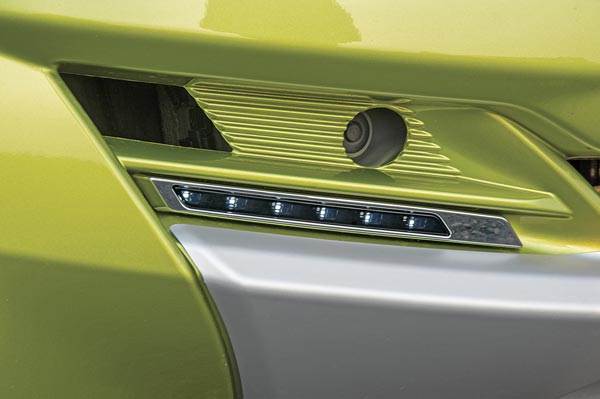
Walk around to the side and you can’t miss the Redigo’s space-efficient profile. The stubby nose, short overhangs and tall roof, all point to the good use of vertical space. The space between the road and the underbody is best in class too. The Redigo boasts a ground clearance of 185mm (the Kwid has 180mm) which suggests this car could actually hold its own off the road as well.
The rear of the Redigo looks quite distinctive too, with a deep fold that runs across the length of the tailgate. The chrome band on the base of the tailgate and the faux aluminium scuff plate look quite upmarket. The vertically stacked tail-lights accentuate the car’s height. What the Redigo’s designers have succeeded in doing is in making this low-cost hatchback look more expensive than it is, which can be half the battle won in this class.
The Kwid, on the other hand, doesn’t look as upmarket as the Redigo, but instead, has a charm of its own, with a tougher and more robust look. The black cladding on the wheel arches and doors adds to its rugged appeal.
Both cars come with 13-inch wheels and tyres, but unlike on the Redigo, where the three-lug steel wheels nicely fill the wheel arches, the same wheels look puny within the Kwid’s bigger, squared-off wheel envelopes. But this points to the greater suspension travel engineered into the Kwid, which we’ll get to later.
What gets your attention on the Kwid is the wide nose. Viewed head on, the rectangular headlights and the distinctive grille, which has the Renault ‘Lozenge’ prominently on it, makes the Kwid look bigger than it is. In fact, the grille can be accessorised with chrome garnish to stand out even more, and we understand that this is one of the Kwid’s fastest-moving accessories. Clearly, even budget car owners want to stand out from the crowd.
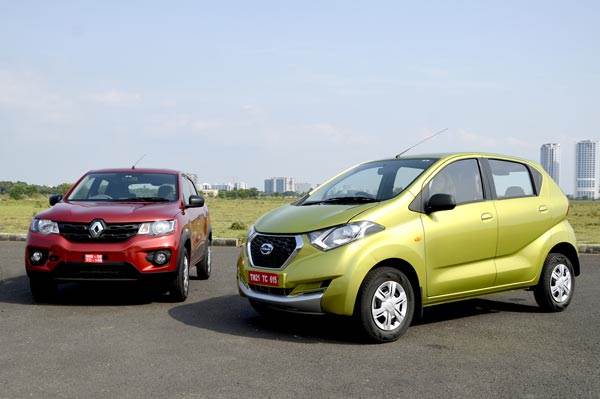
The Kwid’s rear is quite conventional looking and, unlike the vertical tail-lights on the Redigo that accentuates height, Renault has used a horizontal design to emphasise width. When we first drove it, we criticised the Kwid for its flimsy wing mirrors, and so its good to see that Renault has since upgraded them with smaller and sturdier units.
It’s amazing how different both cars are despite having the same parent – there’s not a single part in common on the surface.
Economy class
The stark differences between the Redigo and Kwid continue when you step into each of the cabins. The Redigo’s interior is clearly airier thanks to the elevated seats, generous glass area and the use of light colours throughout. The Kwid’s all-grey interiors and lower seating make you feel hemmed in, in comparison, but the fact is, in terms of interior space, there is not much between the two. At the back, the Redigo has a slight edge, with the taller seat liberating more kneeroom. The narrow cabins of both cars make their rear seats best for two. Travelling three up over long distances can be uncomfortable, but rear passengers get a better view out of the Kwid, because the Redigo has taller front seats which block the view a bit more.
Get behind the wheel and the contrasting driving positions are again immediately apparent. You sit much higher in the Redigo and the view outside is the best yet in a small car, and for beginner drivers who typically find it difficult to judge their car’s extremities, this is a big plus. This is not to say that the Kwid’s driving position is bad. It’s just that in the Renault, you sit lower which, in fact, feels a bit more natural.
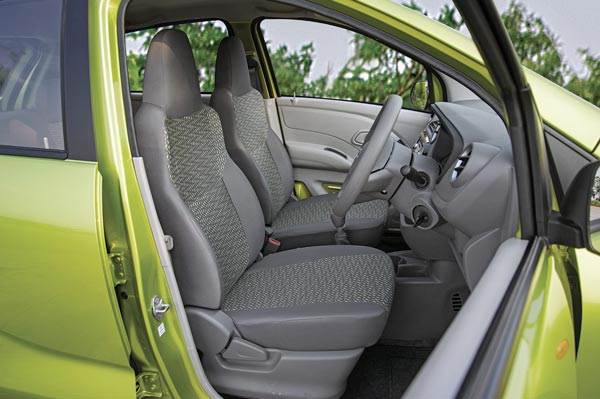
The Redigo’s dashboard has more niches carved out of it to make available lots of open storage space. Apart from the large shelf above the dashboard (which the Kwid also has), there are useful slots in the centre console and to the right of the steering wheel which keep your knick-knacks handy. The glovebox, however, is too tiny to store anything large and this is where the Kwid, with its two gloveboxes, really scores. But a big flaw is the latching mechanism for the upper lid. It’s too flimsy and tends to fail after repeated use. Renault needs to fix this fast.
The Redigo has borrowed some bits from the Go and is better for it. The instrument cluster, which includes a digital rev counter, is carried over too from the bigger Datsun. The Kwid doesn’t get a rev counter but the LED display for the speedometer is quite unique and cleverly, does away with the need for instrument lighting.
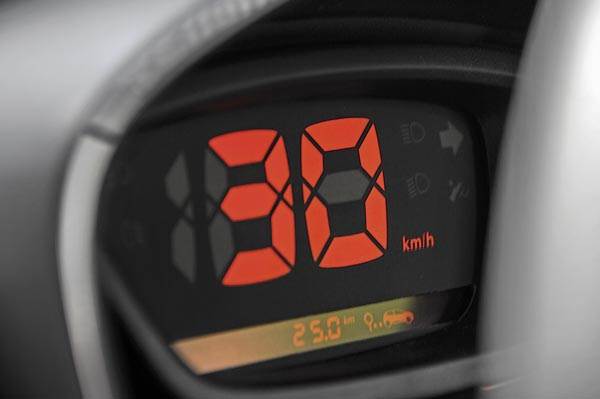
Both cars have nice chunky steering wheels and if you look closely, there are some common bits (at last!) like the wiper/indicator stalks and power window switches. In the Kwid, the window switches are in a more convenient position on the dash, whilst the Redigo has them on the console between the seats. A small patch on the Redigo’s front door pads to blank out the manual window winder slots suggest that the option of power windows for the Redigo was not originally catered for.
While both cars’ interiors are closely matched when it comes to design and functionality, the Redigo slips back when you start totting up the features. The Kwid’s touchscreen infotainment system is a big blow to the Redigo, whose tiny single-DIN unit looks outdated in comparison. Yes, the Redigo gets a CD player (the Kwid doesn’t) and there’s a USB port too, but the absence of Bluetooth and other features like navigation, which the Kwid has, leaves the Redigo trailing behind. Basics like an intermittent setting for the wipers and central locking are not provided, and the Kwid, with its deeper door pockets and a much larger luggage compartment, is far more practical.
Although the Kwid’s interiors are basic, they feel more substantial than the Redigo’s scantily clad insides, where exposed sheet metal around the door pockets and C-pillar is a bit of an eyesore. The Renault’s cabin feels better insulated too and all-in-all, a clear step ahead of the Datsun’s.
Eco drive
Having the same engine and gearbox and a weight difference of only 25kg, you would expect the Redigo and Kwid to be similar in the way they drive, but to our surprise, they performed quite differently. The 799cc, three-cylinder produces an identical 54hp and 72Nm, but it’s the way they deliver those numbers that makes the difference. Datsun engineers say that there is a five-10 percent difference in the state of tune and it all boils down to the engine calibration, which is different for each car.
The Redigo doesn’t make a favourable first impression. Idle is quite rough and noisy, and then, when you put your foot down to take off, the car momentarily flounders. Once on the move, part throttle response is quite good and the Redigo gamely keeps up with the flow of traffic. However, floor the nicely sprung throttle pedal to the mat and you’ll encounter the engine’s frustratingly flat mid-range, which necessitates a downshift.
Power delivery is far from smooth and the powerband has distinct steps, the last of which can be felt around 4,000rpm. The engine pulls quite well towards the top end, but what will discourage you from doing so is its noisy and thrashy nature. In fact, overall insulation levels are quite low on the Redigo and you can hear a wide array of mechanical sounds filtering through. It’s not that the Kwid is particularly refined, but in comparison to the Redigo, it feels smoother and quieter, which suggests that Renault’s eight-month head start with the Kwid, has allowed customer feedback to be addressed, and to further tune the all-new, all-aluminium engine.
Datsun says that the Redigo’s 0-100kph time (a claimed 15.9 seconds) is faster than the Kwid’s. While we didn’t have our VBOX to verify the claim, a rudimentary side-by-side drag with both cars actually saw the Kwid edge ahead. The Kwid also has a stronger mid-range, which allows for smoother and less interrupted progress, and this makes it far nicer to drive. The gearbox on both cars feels similar, which is to say it’s a bit rubbery and not very precise, but yet, it’s light enough and doesn’t require much effort to slot through the five forward gears.
If the Kwid noses ahead of the Redigo when it comes to performance, where it blows it away is with its ride and handling balance. The Datsun’s taller stance has made the Redigo’s engineers opt for a slightly stiffer suspension setup to counter body roll, and the firmness can be immediately felt. The ride is a bit jittery over uneven roads and this is exacerbated by the shorter wheelbase. Unlike the Kwid, the Redigo’s suspension travel is limited and hence, the suspension does thump and crash a bit on broken surfaces. On smoother roads, the Redigo’s ride is more than adequate, and it copes with smaller bumps and ruts well. The tight turning circle and light steering make the Redigo a breeze to park and wiggle through traffic, but the steering’s inherent lack of feel doesn’t quite inspire confidence at speed. The Redigo rolls a fair bit too through corners when pushed hard, but driven sensibly, it’s an easy car to drive.
The Kwid’s light steering isn’t bristling with feel either, but it’s just that the more hunkered-down stance makes you feel more connected to the road and body roll is much less. But what makes the Kwid so much easier and more enjoyable to drive at speed is the brilliant suspension. It’s set-up on the softer side, but the compliance is rarely challenged thanks to the suspension’s long travel that soaks up roads that would make bigger cars flounder. The best bit is that there’s no excessive pitching either and the Kwid’s astonishingly comfortable and consistent ride is possibly its biggest strength.
Brother vs brother
The Redigo is a big step forward for Datsun and comes across as far more contemporary than the earlier cars launched by the budget brand. With its compact dimensions, light controls and easy handling, it does a good job as a city car. But what will truly appeal to budget car buyers is how light the Redigo is expected to be on the wallet. With a best-in-class fuel-efficiency figure (shared with the Kwid, incidentally), the promise of cheap service and spares and, most importantly, a very aggressive price-tag, the Redigo could be the answer for those on a very tight budget. Prices for the Redigo start at Rs 2.39 lakh (ex-showroom, Delhi) The top-of-the-line model is expected to be priced around Rs 3.34 lakh. The very modern and striking styling, no doubt, makes the Redigo look more premium than it actually is, but will this be enough to sway buyers? At the end of the day, it’s still a conventional hatchback, unlike the Kwid, which stands out from the crowd with its crossover design.
But it’s not the style, which anyway is quite subjective, but rather the substance it has that makes the Kwid a bit better. It rides better, drives better, is better equipped and feels more refined. Yes, it will be more expensive than the Redigo, but it takes your money further, and it feels half a size bigger. Born of the same parents, the Kwid is like the more mature, elder brother. It feels more rounded and complete than the Redigo and therefore is able to nose ahead.

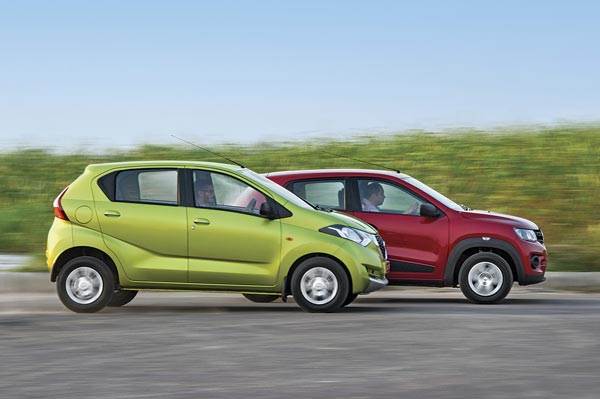
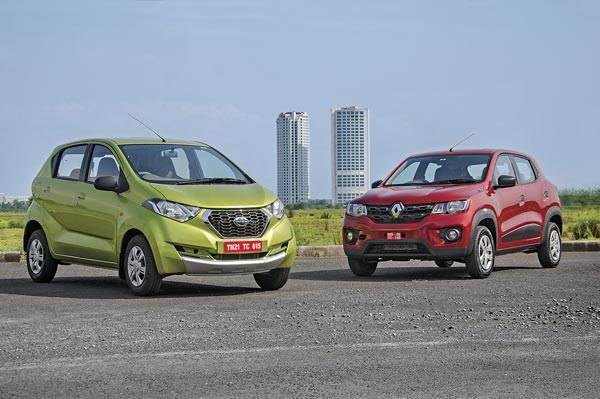
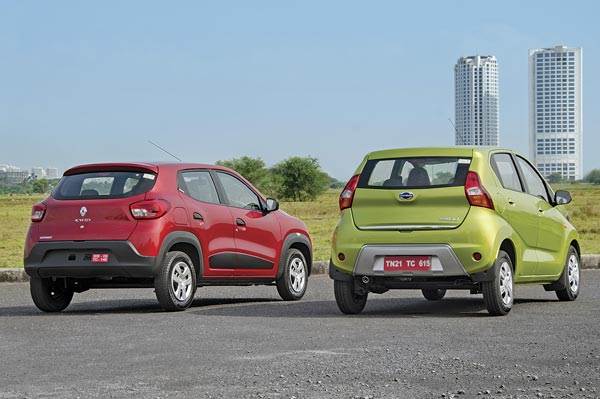
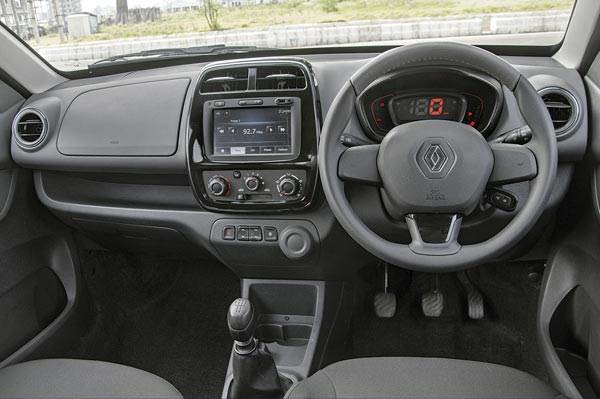


Comments
Member Login
Personal Details
No comments yet. Be the first to comment.